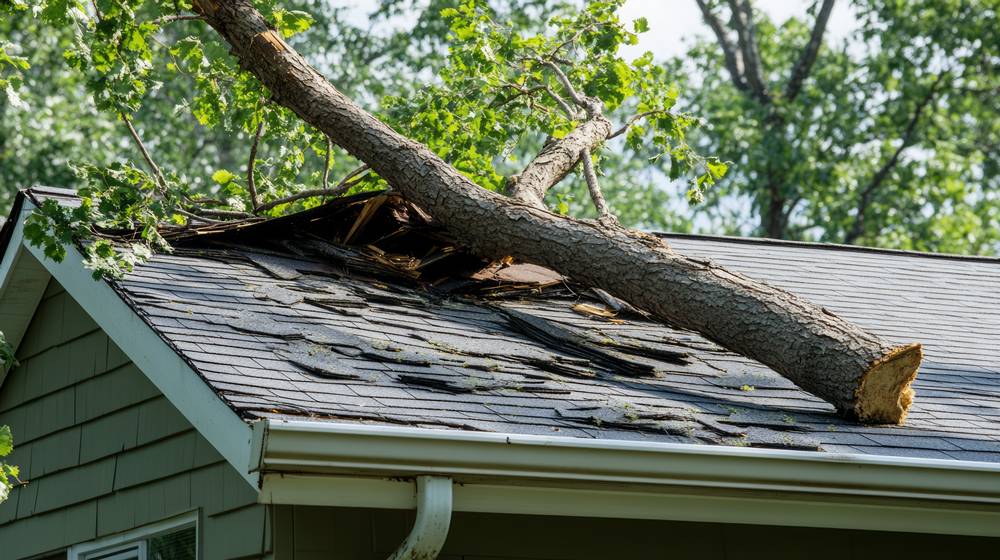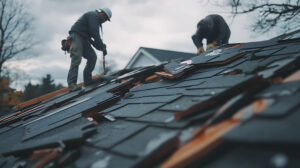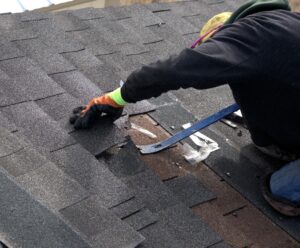One of the most common questions homeowners ask when their roof sustains damage is: Does insurance cover roof replacement? Roofs are essential to keeping your home safe, so when they are damaged, whether by a storm or general wear and tear, it’s crucial to understand your options for repair or replacement. The good news is that, in many cases, homeowners insurance does cover roof replacement, but several factors determine whether you qualify. In this article, we’ll explore how home insurance covers roof repairs, the insurance claim process, and what you need to know before filing a claim for roof damage.
How Homeowners Insurance Covers Roof Replacement
Homeowners insurance generally provides coverage for roof replacement if the damage is caused by a covered peril. Common perils include fire, hailstorms, fallen trees, or vandalism. However, it’s important to note that insurance doesn’t typically cover damage caused by wear and tear or lack of proper maintenance.
Dwelling Coverage and Roof Replacement
Most homeowners insurance policies include dwelling coverage, which covers the structure of your home, including the roof. This coverage generally applies to unexpected damage, such as from a hailstorm or a fallen tree. It’s important to review your policy to confirm the extent of coverage and whether it specifically includes covering your roof.
In some cases, insurance might cover roof repairs rather than a full roof replacement. Whether you need to repair or replace your roof depends on the extent of the damage and how your insurance company evaluates it.
Related: How to Find a Roof Leak to Prevent Future Damage
Filing an Insurance Claim for Roof Damage
When your roof is damaged, filing an insurance claim is usually the next step. Here’s what to expect:
Step 1: Assessing the Damage
Before you file a claim, it’s a good idea to contact a roofing company to assess the damage to your roof. A roofing contractor can provide an estimate of the repair cost or determine whether a full roof replacement is necessary. This assessment can help support your insurance claim and ensure you have the right documentation for the damage.
Step 2: Filing a Claim
Once you have the necessary information, you can file a claim with your insurance company. Provide them with any photos, estimates, or documents you’ve gathered. Your insurance company will likely send an adjuster to inspect the damage and assess the cost of replacing your roof or making repairs.
Step 3: Approval and Payment
If your claim is approved, your insurance company will typically cover the cost of repairs or replacement, minus your deductible. The deductible is the amount you’ll need to pay out of pocket before the insurance company steps in to cover the remaining cost.
Factors That Affect Roof Replacement Coverage
Several factors determine whether your insurance will cover roof damage and whether you’ll be reimbursed for replacement or repairs. These factors include:
The Age of Your Roof
Insurance companies may not cover the full replacement cost if your roof is older or has experienced significant wear and tear. Many policies have specific clauses that limit coverage for roofs over a certain age. If your roof has been in place for many years, it may not be considered a viable candidate for full replacement.
Type of Damage
Not all types of roof damage are covered under homeowners’ insurance. For example, wear and tear caused by neglect or poor maintenance isn’t covered. It’s essential to differentiate between accidental damage, like storm damage, and damage resulting from poor maintenance.
Roof Materials
The type of roofing materials you have can also influence your coverage. If you have premium roofing materials, such as slate or high-end shingles, it’s a good idea to discuss with your insurer whether those materials are fully covered under your policy.
Does Home Insurance Cover Roof Repairs or Replacement?
While many policies cover roof repairs or replacement in the event of unexpected damage, there are limitations. If the damage is due to an event like a storm, it’s typically covered under your home insurance policy. However, if the damage is due to wear and tear, you may have to pay for repairs or replacement out of pocket.
Some homeowners may choose to file an insurance claim for roof damage, but others may opt to pay for repairs themselves if the cost of the deductible is higher than the cost of fixing the roof. In cases where repairs are minimal, it may not be worth filing a claim.
Related: Roof Repair vs Roof Replacement and Which is Right for You
Can You File a Claim for Roof Damage Without Replacing the Roof?
It’s possible to file a claim for roof damage without replacing the entire roof. If the damage is localized, your insurance may cover the repairs. However, if the damage is extensive and affects the overall integrity of the roof, your insurance company may approve a full replacement.
Why It’s a Good Idea to Consult a Roofing Company
Before filing an insurance claim for roof damage, it’s always a good idea to consult a reliable roofing company. They can assess the damage, provide you with an estimate, and help you understand the scope of work needed. Working with a professional roofing contractor can help ensure that your claim accurately reflects the necessary repairs or replacements.
Conclusion
In many cases, homeowners insurance covers roof replacement if the damage is caused by a covered peril like a storm or fire. However, wear and tear and lack of maintenance are typically not covered. To determine if your insurance will cover roof repairs or replacements, it’s essential to carefully review your policy and consult with a trusted roofing company. Whether you need to file an insurance claim or handle repairs on your own, understanding how your home insurance works and what it covers can help you make informed decisions when it comes to covering your roof.





